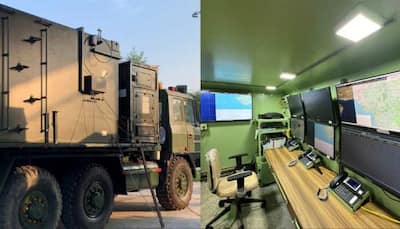In the backdrop of recent drone and missile strikes by Pakistan, India’s ultra-modern indigenous air defence system Akashteer has attracted national and strategic attention for its role in neutralizing and intercepting airborne threats along the western border. The entirely AI-driven system effectively repelled a series of hostile drones and missiles in the night of May 8–9, when Pakistan launched a coordinated cross-border attack on 26 targets.
As per defence officials, Akashteer played a crucial role in securing Indian airspace, avoiding major damage, and demonstrating the nation’s technological capabilities in battlefield automation and air threat management.
Jointly developed by Defence Research and Development Organisation (DRDO), Indian Space Research Organisation (ISRO), and Bharat Electronics Limited (BEL), Akashteer is an Artificial Intelligence-powered air defence system that combines real-time surveillance, detection, tracking, and neutralisation of enemy aerial threats.
Characterised by officials as India’s own version of Israel’s “Iron Dome,” Akashteer is also special in the sense that it is entirely indigenous, with no foreign components or external satellite dependence. It is part of India’s overall C4ISR (Command, Control, Communications, Computers, Intelligence, Surveillance and Reconnaissance) system.
BEL is proud to announce that our in-house designed & manufactured Air Defence System, Akashteer, has proved its mettle in the war-field. Ground-based Defence Systems integrated with Akashteer made it hell for Pakistan’s air adventures.
— Bharat Electronics Limited (BEL) (@BEL_CorpCom)
Akashteer employs high-end AI software and autonomous decision-making systems for detecting and intercepting incoming dangers without the use of human handlers. It cross-correlates inputs from radar systems, space-based inputs like NAVIC, and ground sensor inputs to deliver a single-source, real-time airspace image. This enables target engagement in the blink of an eye against vehicles like drones, loitering munitions, and cruise missiles.
As per a post by DD News, “Akashteer is capable of intercepting and neutralising hostile UAVs without detection, using no active radar signatures. It relied entirely on stealth drone tracking, satellite surveillance, and AI-based decision-making.”
Its vehicle-based, mobile configuration guarantees flexibility in high-risk areas. The system combines several components—like 3D tactical radars, low-level lightweight radars, and the Akash missile platform—into a unified operational command structure.
The recent engagements demonstrated Akashteer’s superiority over Pakistan’s air defence systems—primarily based on HQ-9 and HQ-16 platforms—which failed to detect or intercept Indian projectiles during the exchange. In contrast, Akashteer intercepted incoming threats in real time, giving India a decisive edge in aerial defence.
“With Akashteer, India becomes the first non-Western nation to fully integrate autonomous drone swarms, indigenous satellite surveillance, and AI-driven battlefield coordination into a single combat-ready platform,” the DD News report stated.
The recent battles proved Akashteer to be superior to Pakistan’s air defence systems—chiefly HQ-9 and HQ-16 platforms—since they could not detect or intercept Indian missiles during the engagement. In comparison, Akashteer intercepted incoming threats in real time, providing India with a clear advantage in aerial defence.
“With Akashteer, India is the first non-Western country to integrate completely autonomous drone swarms, native satellite surveillance, and AI-led battlefield command into one combat-capable platform,” the DD News report read.
Its deployment and success represent a huge milestone in India’s defence strength. Its achievement reflects the country’s shift from conventional air defence concepts to next-gen, AI-powered warfare systems.
While tensions remain simmering along the Line of Control and beyond, platforms such as Akashteer are likely to be called upon to serve as a key element in upholding strategic deterrence and defending Indian airspace with precision and autonomy.
Stay informed on all the , real-time updates, and follow all the important headlines in and on Zee News.








